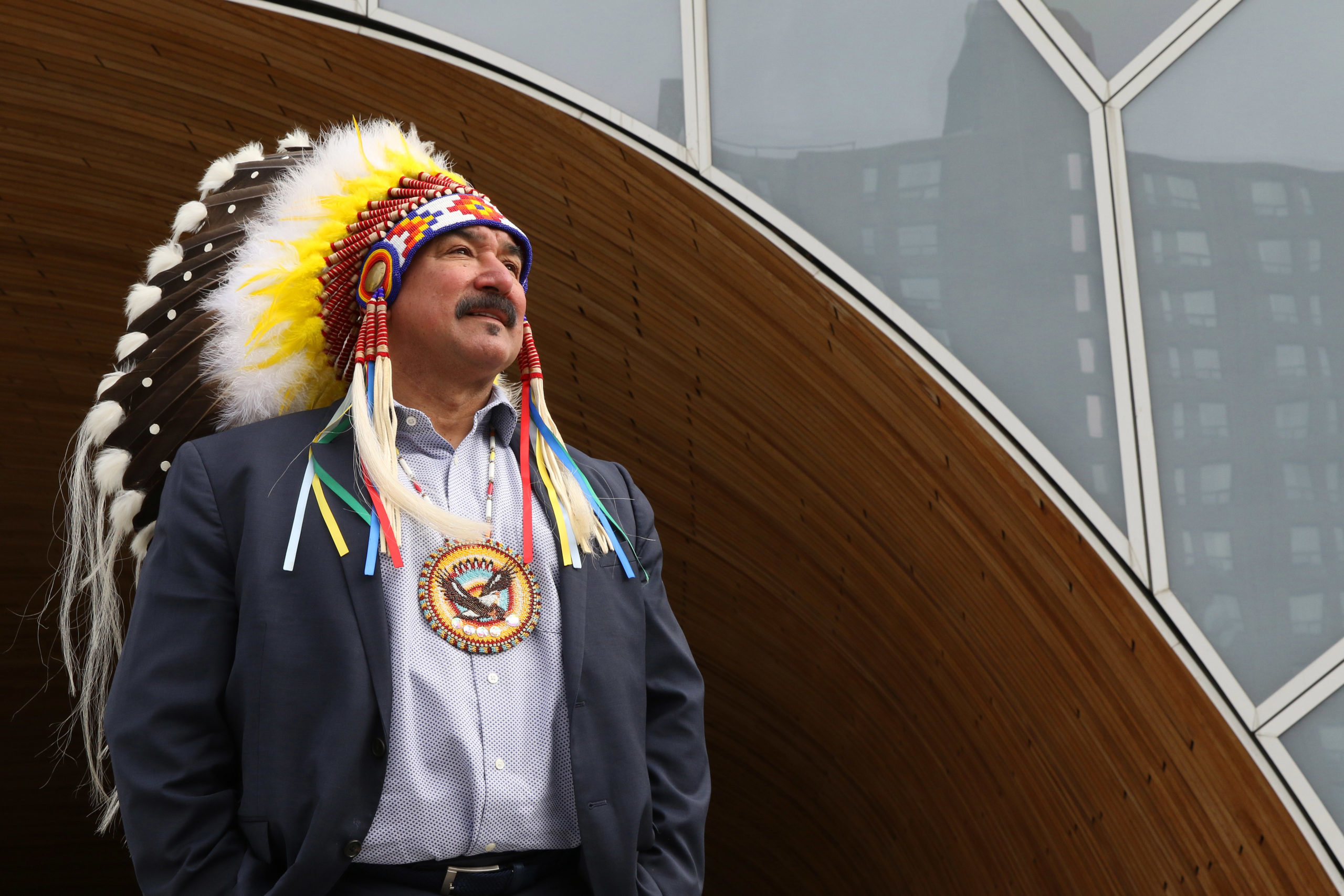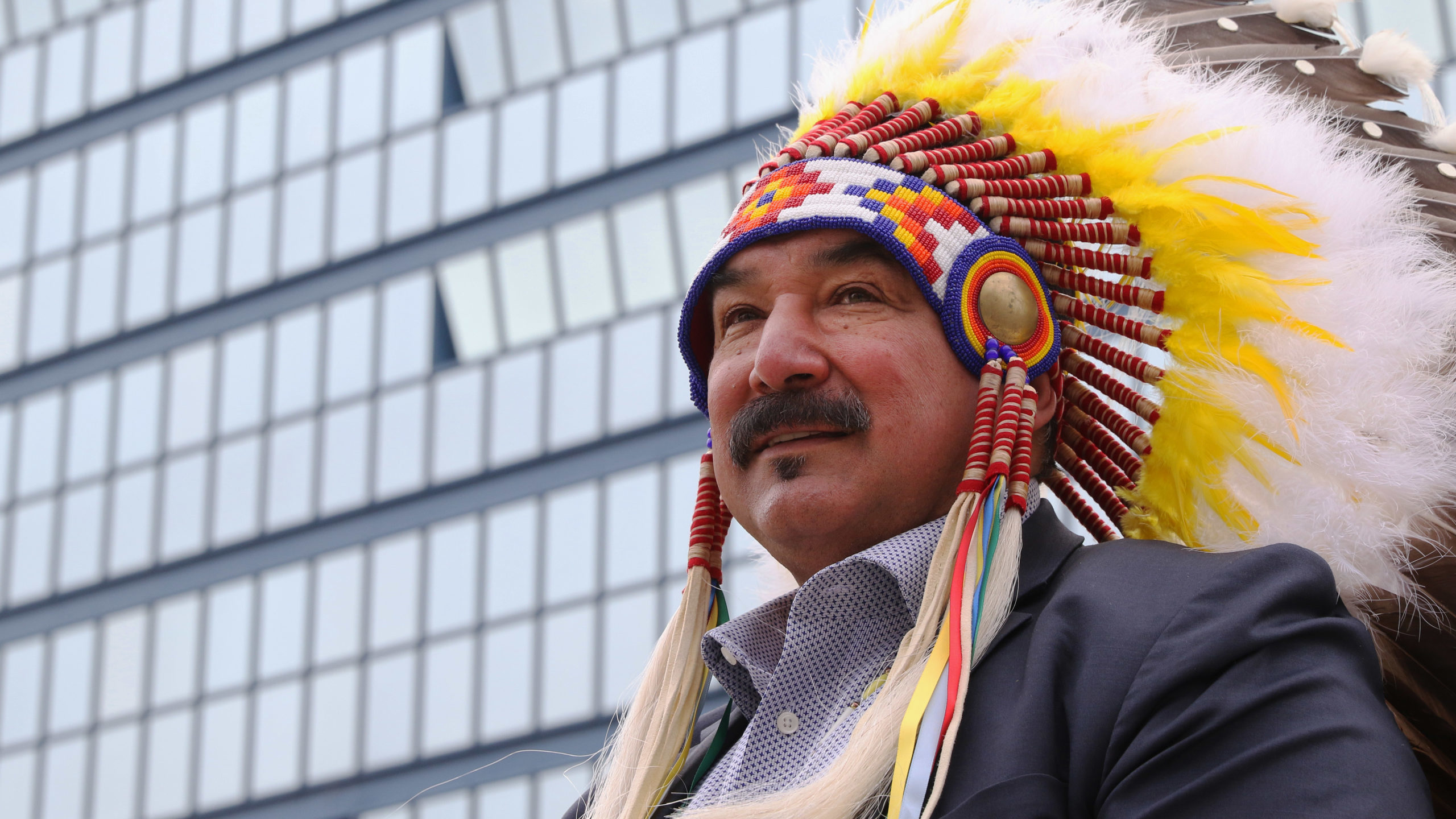The former chief of the Flying Dust First Nation in Saskatchewan has taken a new step in his long pursuit to advance the economic and social wellbeing of Indigenous people.
Bob Merasty, the new executive director of the Indigenous Resource Network (IRN), believes the needs of Indigenous people in Canada are complex and diverse, but can be addressed through building bridges between Indigenous communities and industry partners in oil and gas, mining, forestry, agriculture, fishing and energy.
“To me, it’s very simple. Our Creator provided us with this land and all its resources, this beautiful earth, these resources for all of us to share and benefit. There is everything here for everyone,” he says.
“This is a great time to explore opportunity and improve the lifestyles of our people. New and exciting things are happening.”
Traditional teachings
Raised by his grandmother, an Indigenous knowledge keeper, Merasty says he was taught the values that guide him as a leader and warrior for Indigenous economic and resource development.
In Cree, these are the teachings of “manatisowin” (honesty and integrity), “sahgitowin” (loving for others), “kisiwatisowin” (kindness to others), and “wichitowin” (always ready to help others).
Established in 2020, the IRN seeks to overcome a “polarized and divisive” public debate about resource development in Canada, and provides “a platform for Indigenous workers, business owners and leaders who support Indigenous engagement in the resource sector.”
In the executive director position since February, Merasty has several goals. His focus is on developing partnerships between Indigenous communities and the resource industry to include participation on projects as well as opportunities for First Nations businesses and services.
“Let’s have industry and our communities come together in a way that we all benefit,” he says, while prioritizing Indigenous languages and cultural identities.
Merasty says accessing revenue generation opportunities helps address many needs in Indigenous communities including elder care, social programs, employment, addictions assistance, childcare and mental-health initiatives. It also helps build more stable families and healthy communities.
A proud speaker of the Cree language, Merasty has held the roles of second vice-chief with the 74 First Nations of Saskatchewan and the Federation of Sovereign Indigenous Nations.
A former board member of SaskPower’s First Nations Power Authority and Saskatchewan’s Corporate Procurement Committee, he has also served in a variety of business and economic development roles at the Saskatchewan Research Council, the Crown Investments Corporation of Saskatchewan, and the FSIN Corporate Circle.

A great time to explore opportunity
Between 2012 and 2019, Alberta’s oil sands sector alone spent $15 billion with Indigenous businesses, reaching a record $2.4 billion in 2019, according to the most recent data from the Canadian Association of Petroleum Producers.
Recent examples of work happening with Indigenous communities include a historic agreement in which 16 B.C. Indigenous communities will become equity owners in the Coastal GasLink pipeline once it is up and running.
Several Indigenous groups are also pursuing ownership of the Trans Mountain pipeline, which the federal government is expected to sell once the Trans Mountain Expansion is substantially completed.
As of the end of 2021, the project has awarded more than $2.7 billion to Indigenous businesses through nearly 4,000 separate contracts. That’s an increase of over $1.3 billion in spend compared to the end of 2020.
In B.C., the Haisla First Nation and Nisga’a First Nation are both advancing separate natural gas export terminals where their communities share project ownership.
Free and informed consent
Creating mutually beneficial situations between Indigenous communities and industry requires free prior and informed consent, Merasty says.
This means building relationships with communities by “following protocol, sitting down and talking with each community in a respectful way, and providing them with all the information so they make an informed and intelligent decision,” he says.
“I see the oil and gas sector really doing its share. We are working towards meaningful engagement of other industry sectors.”
A look at resource development options in the areas of mining, forestry, agriculture, fishing and renewable energy, is also on IRN’s plate.
Merasty says the network would like to bring together existing resource development advocacy groups more consistently, such as the Indian Resource Council, the Saskatchewan First Nations Natural Resource Centre of Excellence, the First Nations Major Projects Coalition, and others.
“When we’re collaborating, we’re being more effective and efficient,” he says. “We all have the same vision.”
The unaltered reproduction of this content is free of charge with attribution to Canadian Energy Centre Ltd.
